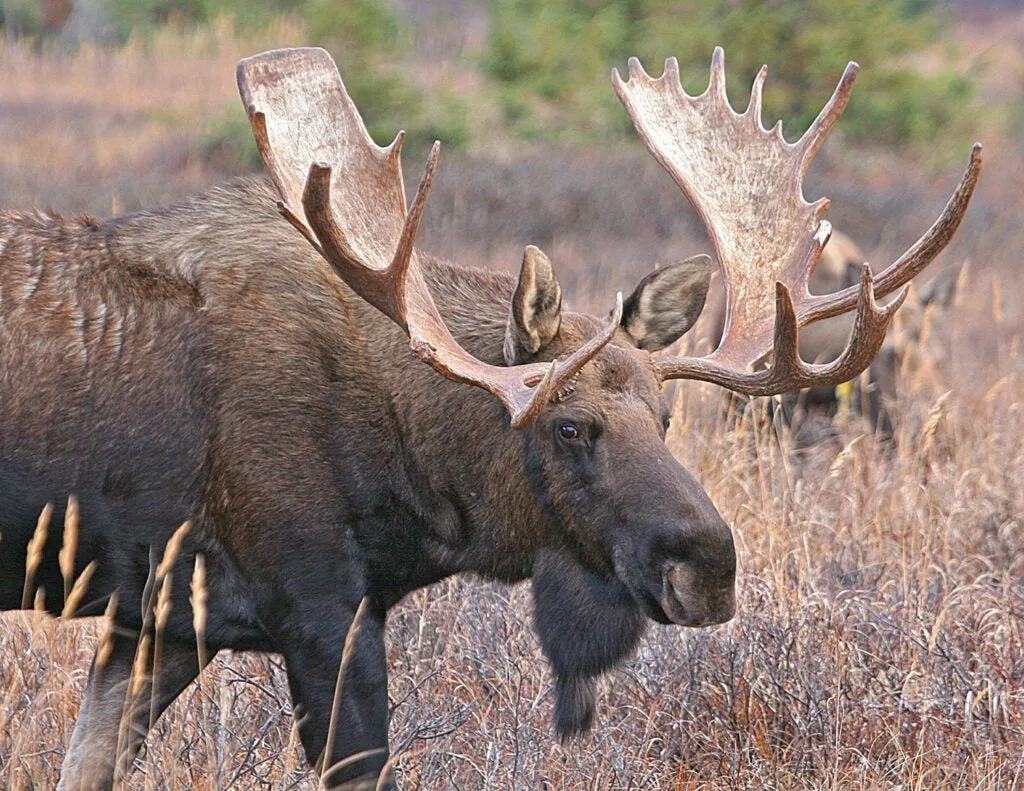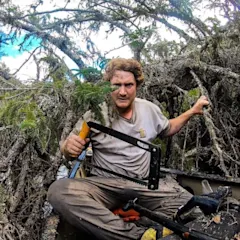Spend enough time in the outdoors, and you’re bound to wonder how you would handle a true survival scenario. Could you gather and forage enough food? Could you build a strong survival shelter to keep you warm and dry? Could you start a fire…in the pouring rain? These are the skills of a total outdoorsperson. But there are nearly as many survival myths out there as there are skills—and some of those myths could lead to disaster if and when the you-know-what hits the fan. Here are four of those myths, and what you can learn from them to help prepare you for whatever the wild throws your way.
Myth No. 1: You Can Live Solely off Natural Survival Foods
Flip to the wild-edibles
section of a survival book, and it’ll show you how to harvest inner tree bark for food or how to boil (and re-boil) lily-pad tubers and skunk cabbage so they are palatable. You’ll also learn that hemlock needles are edible, plus how to cook and eat snails and so on.
These are considered “survival foods” because they’re things that are edible that you wouldn’t likely eat in a normal situation. The myth here is that you can survive off them for an extended length of time. But the reality is if you are only eating “survival foods,” you’ll start feel to sick and weak after a day or two. (Some of these survival foods also have little to zero caloric value, which makes them pointless to eat.)
This isn’t to say that you shouldn’t learn as much as you can about what’s edible in the wild, because in a true survival situation, you’re going to have to forage at some point. Just don’t plan on surviving off these foods entirely—because it’s impossible.
Myth No. 2: You Can Complete Survival Projects at a Normal Pace
Another fun section in any survival book are the chapters on projects—ones laden with drawings of primitive traps
, and various shelters
. When you look at these projects, you might think you can do them all in a survival situation. Not true.
The myth here lies in the lack of understanding we have regarding the amount of time it takes to gather supplies, catch and hunt food (and then clean your food), cut wood, and cook and eat a sustainable number of calories each day. After you’ve done all of this work, you only have a couple of hours left at the end of the day to work on projects, such as shelter improvements or setting traps. The same project that you could bang out in a couple of days at home—when you have access to tools, and food to fuel you through your work—can take you a couple of weeks in the wild.
The lesson here is on focus. Careful observation of the resources in your environment will dictate what’s possible and what the most important things are to spend your time on. Your decision could be the difference between life and death.
Myth No. 3: If You Kill a Big-Game Animal, You’re Set for Food

If you think that the hundreds of pounds of meat from a moose alone will be enough to keep you fed and alive for weeks and weeks, think again. skeeze/Pixabay
Your body can’t digest protein without fat, and you can develop protein poisoning without it. Rabbit starvation and the French-Canadian term mal de caribou (caribou sickness) are common colloquialisms for protein poisoning.
Basically, no matter how many rabbits, snails, limpets, or venison stakes you eat, you can still starve to death because your body can’t digest all of that protein without fat. This is one of the reasons why beaver hunting and trapping was so key to many North American indigenous people for so long—because beavers are fatty. The fat from a black bear would have been of upmost importance, too.
The survival lesson here is that fat is much more precious in a survival situation than most would think, because it allows you to digest lean meats. Fat can be the difference between life and death in all but the most hospitable environments.
**Related: The Best Survival Knives Eve
**r Made
Myth No. 4: Practicing Survival Skills Is the Same as Practicing Survival
Knowing how to make a friction fire, or how to whittle a paddle out of a log, or how to knap stone arrowheads
all have their place in a survival situation (particularly fire making). You can practice these things as much as you want—but the one survival skill that will trump all of these skills is the one that you can’t learn on YouTube. It’s the skill of just being able to rough it.
This is a skill that only comes with experience. One indicator that you have this skill is you notice that you’re still having fun in a situation that others are complaining about. Accumulated experience in remote areas lets you know when something like feeling cold, getting cut, or eating something rotten is actually a concern and when it’s not—so you know when to be concerned and when not to be. When you get to this point, it may appear to others that you enjoy misery but you don’t, it’s just that it’s not miserable to you anymore.
The myth here is assuming that practicing survival and bushcraft skills is good enough to prepare you for a real survival situation—but the truth is that this will not get you very far. You need to find controlled situations where you can’t just run back into the house when it starts raining. Plan thought-out trips that will produce real outdoor scenarios where you need to use survival skills. These scenarios may not be fun at the time, but they will build character and confidence.
So much of survival is a mental game, and what is truly hard often has a lot more to do with your mindset than your physical prowess or a skillset that you might have learned in an out-of-context environment. In other words, you might be the quickest draw at the Wild West show, but how good are you when someone is shooting back at you?
is a survival and bushcraft expert. He won season 4 of “Alone” on the History Channel.






